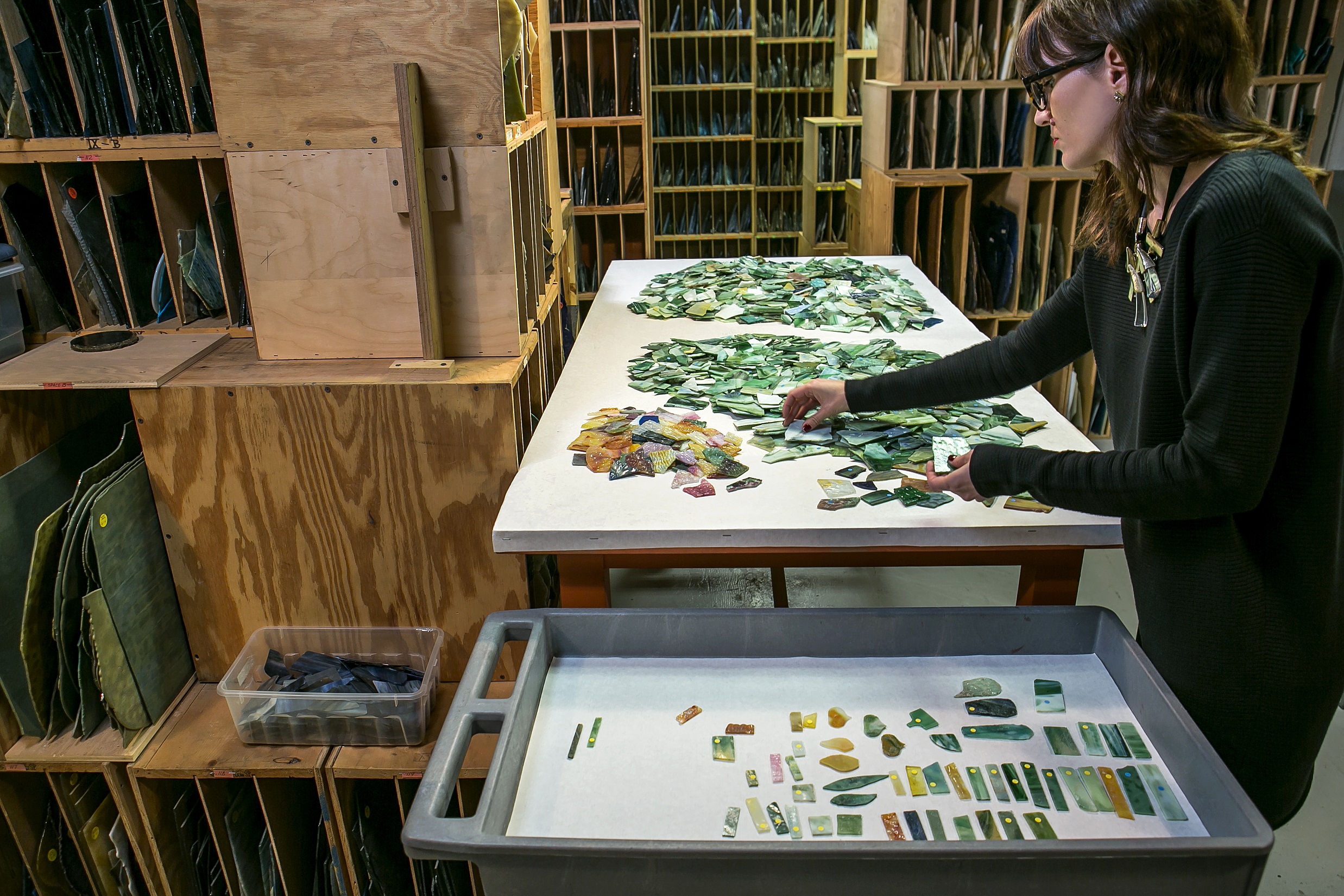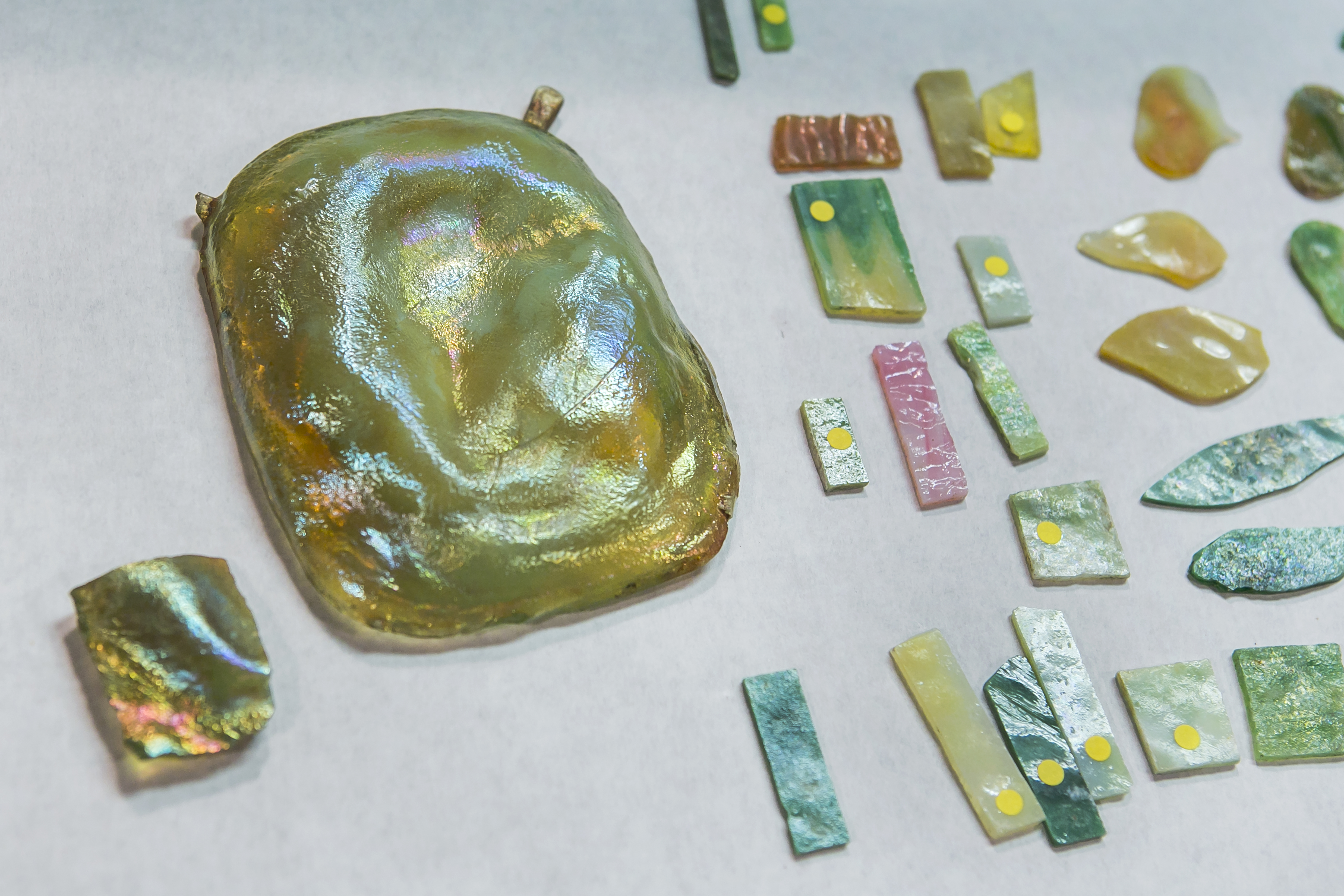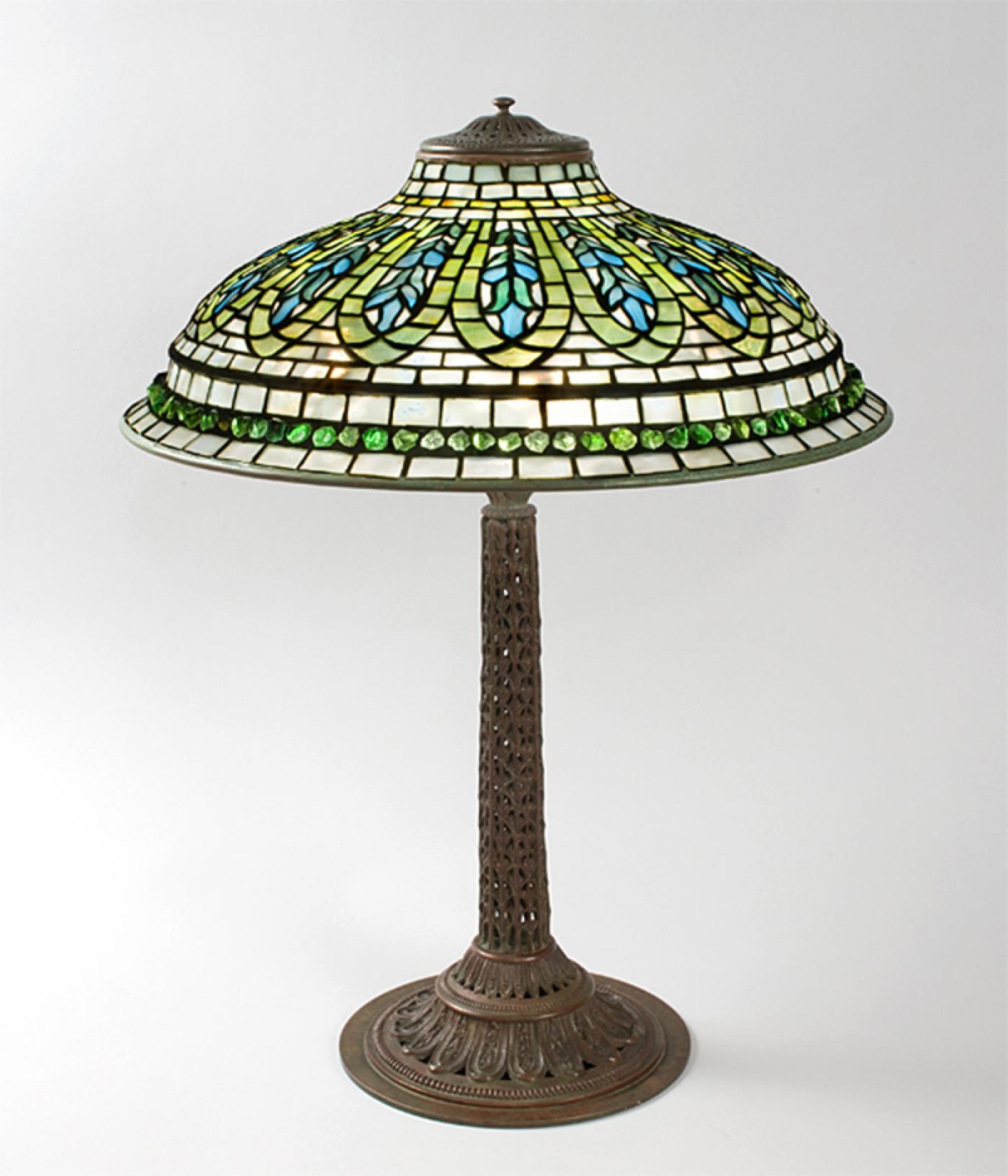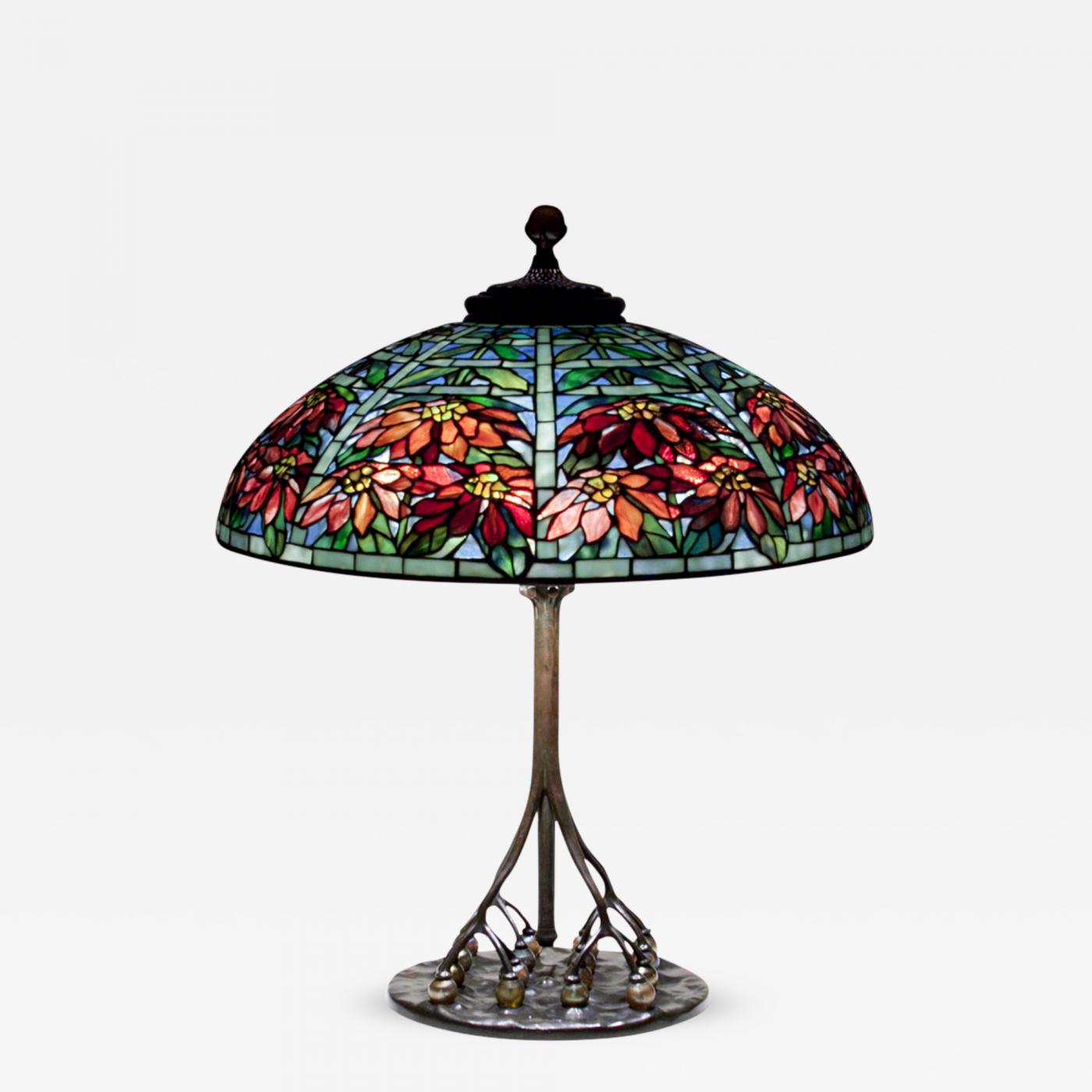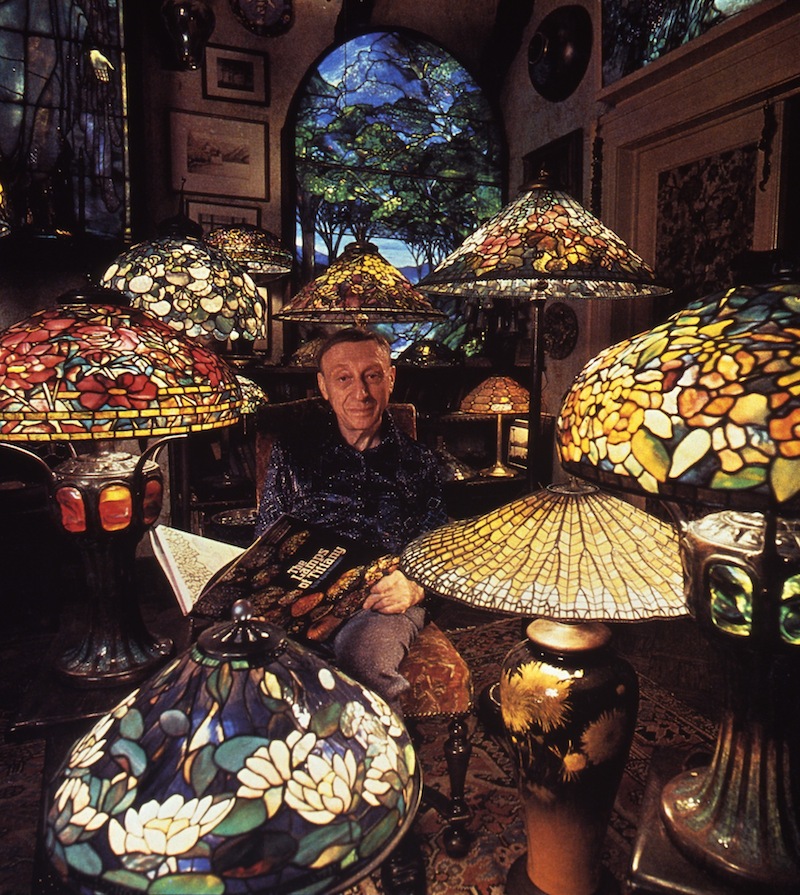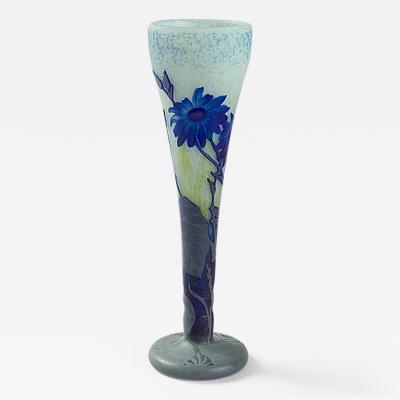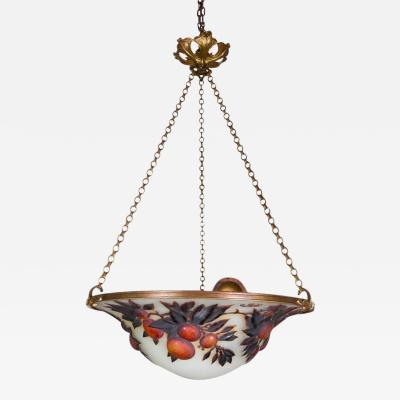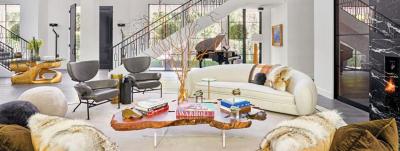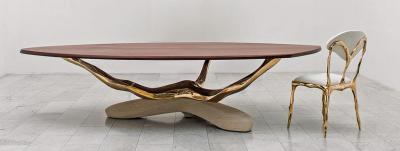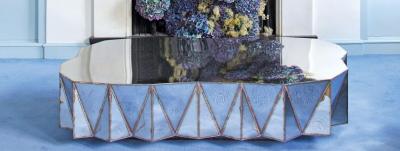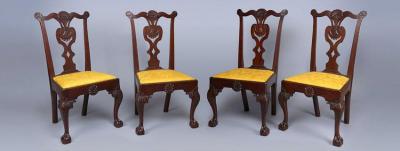Junkyard Bonanza: The Neustadt Collection Receives Donation of Tiffany Glass Shards
In the spring of 2013, a cache of mud-encrusted glass shards was discovered next to what was once Tiffany Studios, in the Corona neighborhood of Queens, New York. As workers demolished the brick factory to make way for a new elementary school, they harvested glass fragments of every size, shade and texture.
“[They] vary from very small to as big as a hand,” Tania Duvergne, an official with the New York City School Construction Authority (SCA), said at the time. “Though the majority have been green, we’ve also found yellows, golds, unbelievable pinks, blues and purples.”
Across town, Lindsy Parrott was astounded when she read about the discovery in the New York Times. “I called them up, and they immediately recognized the historical significance of the find,” said Parrott, the Director and Curator of The Neustadt Collection of Tiffany Glass, in Long Island City, New York, which earlier this month received a gift of about 1000 pieces recovered during the excavation.
Shortly after the shards were discovered, Parrot was invited by the SCA to inspect several five-gallon buckets of the fragments, many of them encased in dirt and grime. (“I cannot describe the filth to you.”) To restore them to their original luster, she bathed them for 24-48 hours in a solution made from Orvus, a soap meant for livestock. After nearly a century underground, many of the shards were imprinted with a white residue, while others had assumed an iridescent quality that would have pleased their maker (and his women collaborators).
“One of the things that [Louis Comfort Tiffany] endeavored to do at Corona was to recreate that iridescence that he so admired in ancient Roman vessels,” said Parrott. “Everything has come full circle. I wonder what Tiffany would think to see that the glass that he was using for his lamps has acquired the iridescence that he was chasing after.”
While there is little doubt as to the authenticity of the glass fragments—the preponderance of shards are of a green-and-white streaky glass of the kind often used in Tiffany Studios geometric lampshades (see illustration below)—the circumstances of the dump remain a mystery.“I can’t figure out why this glass would have been buried,” Parrott said. “I wonder, if at some point, materials just got dumped, sort of like a privy, where people used to throw their materials out back.”
When the shards were first discovered, it received considerable attention in the art world, due in part to the perennial appetite for Tiffany Studios wares offered by dealers such as Macklowe Gallery and Lillian Nassau LLC. The market is not immune to the vicissitudes of the economy, but the demand for the finest lamps—like the Peony, Wisteria and Dragonfly lines—is a constant.
“In the Tiffany market it is the upper echelon pieces that always seem to hold their value,” said Lary Matlick, vice president of Macklowe Gallery, which is renowned for its inventory of some 100 lamps. “Tiffany Studios lamps are extremely desirable. The one downside, if one takes a liking towards them, is that they are very expensive.”
Arlie Sulka, owner of Lillian Nassau LLC, agrees with this assessement, adding that the market for less vibrant or intricate lamps slackened in the wake of the financial implosion of 2008 and the subsequent period of economic torpor. Nonetheless, she regards Louis Comfort Tiffany as the most influential decorative artist of his age, one who combined a penchant for innovation with meticulous design. “There was nothing cursory about his process,” said Sulka. “They did not say, 'O.K., we're just going to make a lamp base, let's throw one together.'”
The heap of discarded glass may have something to do with the turmoil experienced by the factory, which at one point moved to Manhattan, in the years before Tiffany declared bankruptcy in 1932. Since then, the Corona property has been home to a number of businesses, including a bronze foundry, a garment manufacturer and, at the time of its demolition, a halal chicken slaughterhouse.
Before the donation was made to The Neustadt Collection, a large number of fragments were incorporated into Artifacts (C.W.D.), a monumental sculpture by Rita McBride commissioned for The Tiffany School, which has since opened where the factory once stood. Meant to evoke a “modernist frieze,” in the words of the artist, the work consists in an aluminum grid structure with twenty-one panels of glass shards.
For Parrott, this undertaking is only the latest chapter in a decades-long fascination with Tiffany ware. After graduating from the University of Central Florida, in Orlando, she joined the staff of the Charles Hosmer Morse Museum of American Art, home to one of the largest repositories of Tiffany works in the world. Parrott later received a Master’s degree from Parsons School of Design, where she wrote her dissertation on Tiffany ceramics.
Apart from accessioning the shards in this donation, The Neustadt Collection is engaged in the Herculean enterprise of sorting, cataloguing and archiving a 250,000-piece inventory of glass that was part of the liquidation sale when Tiffany’s closed and was later purchased by the late Dr. Egon Neustadt, the institution’s founder. Many of the Collection’s holdings are currently on display in “A Passion for Tiffany Lamps,” a long-term exhibition that runs through April 2018.
















